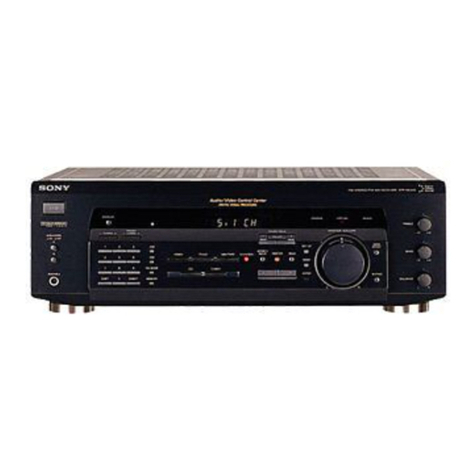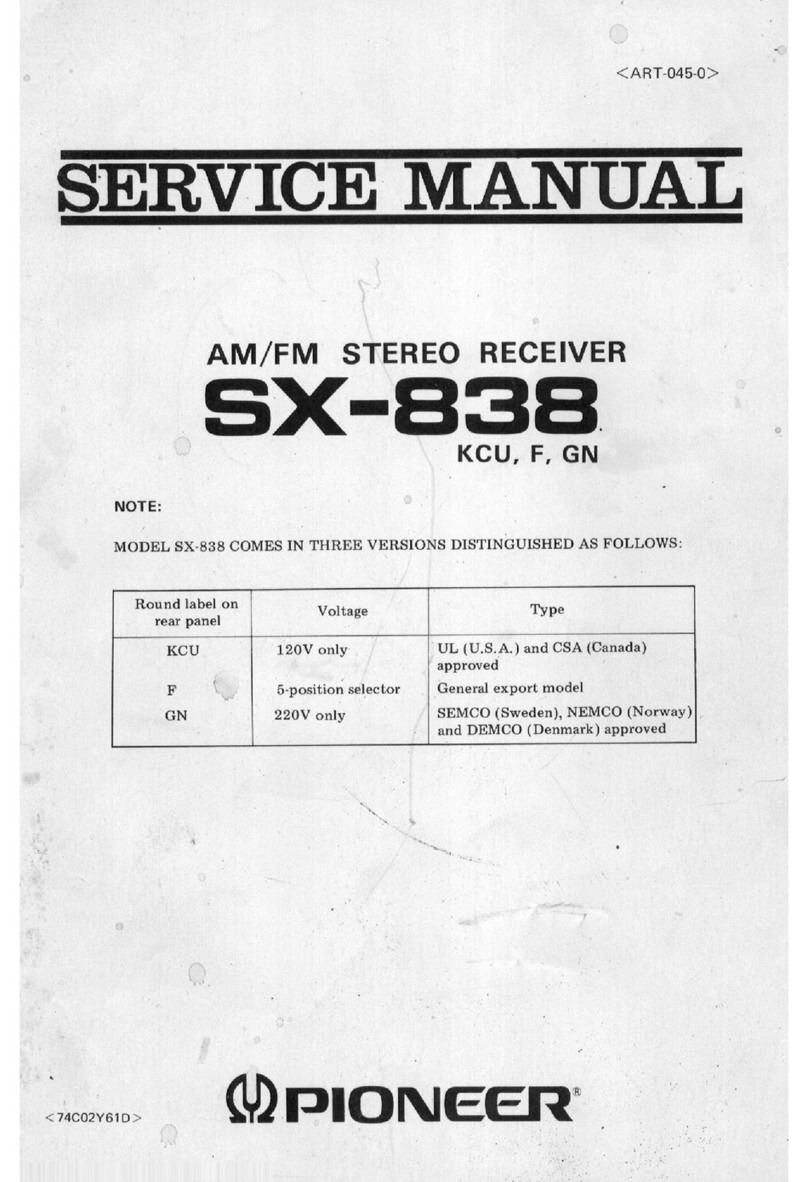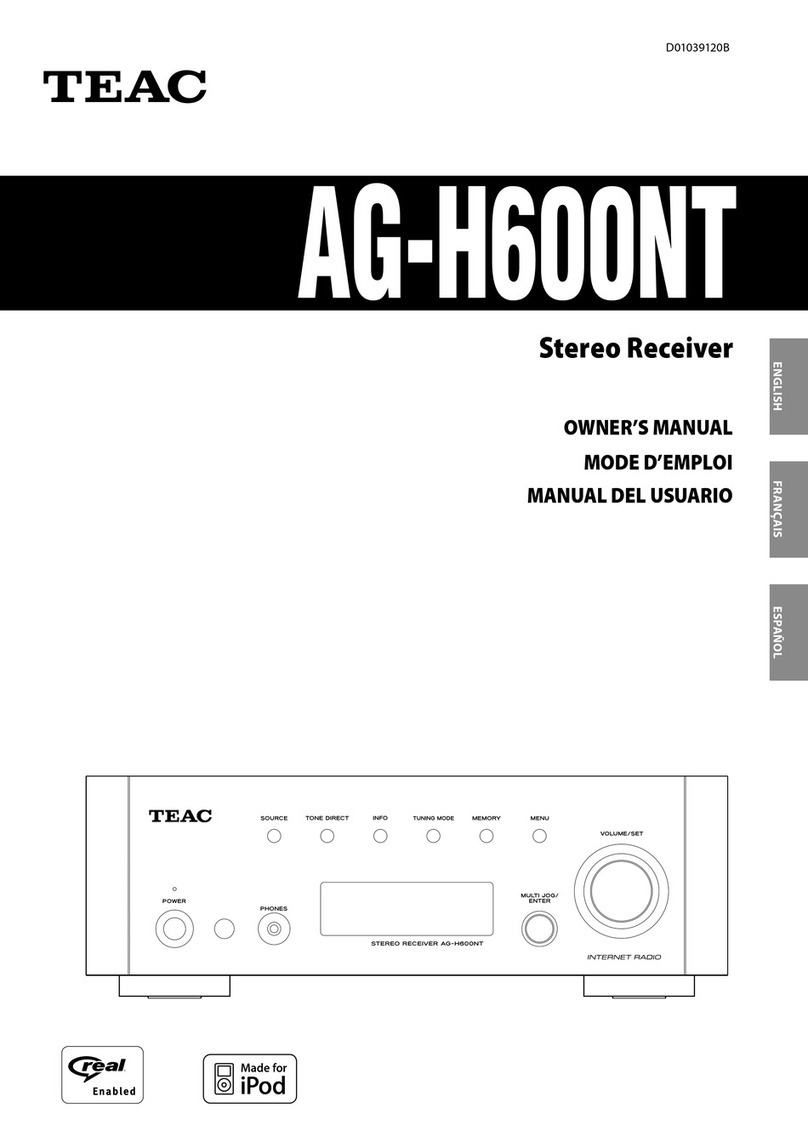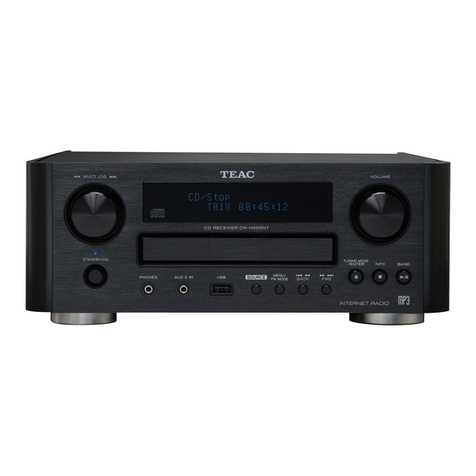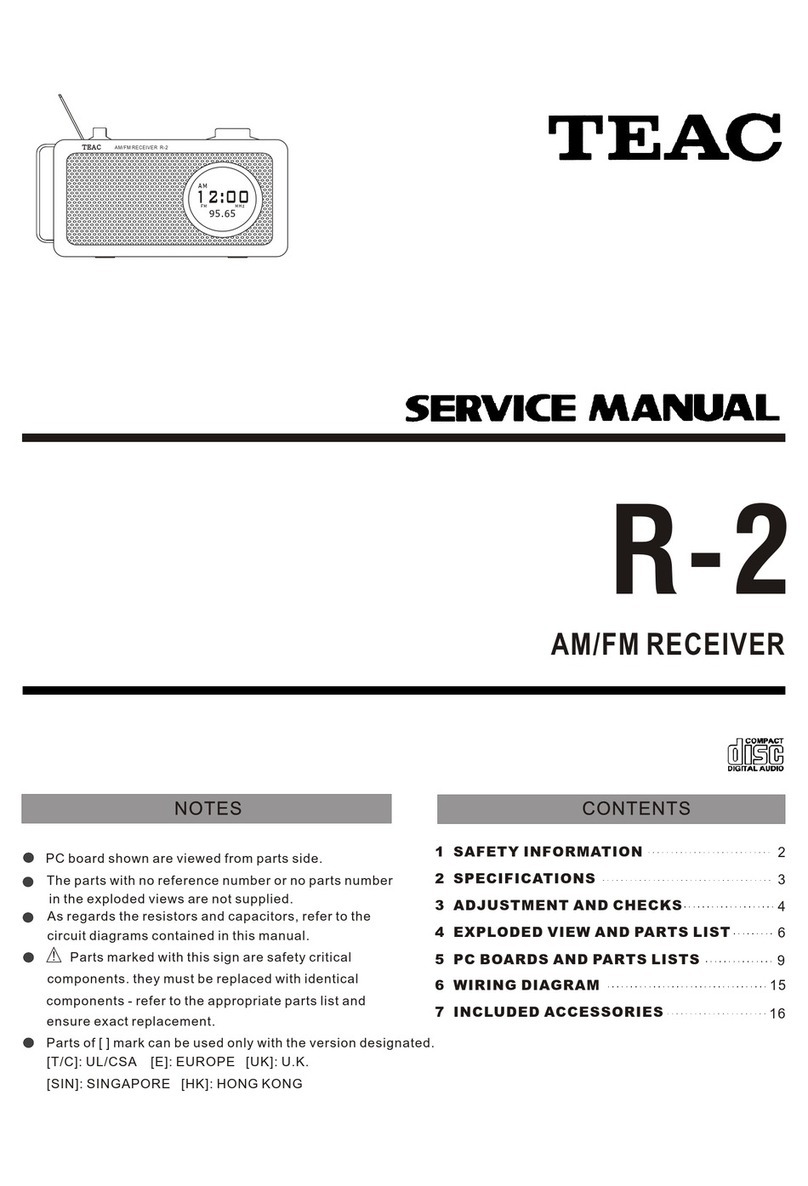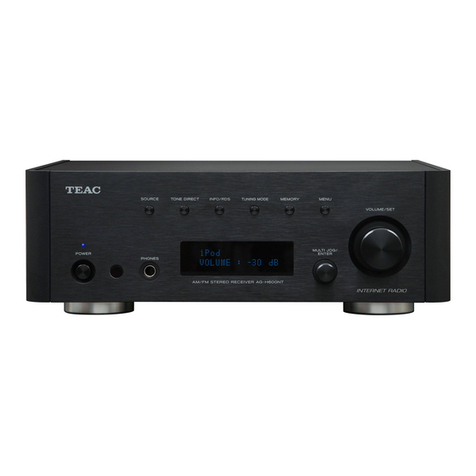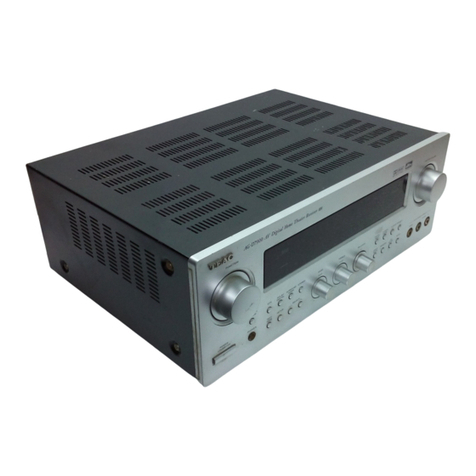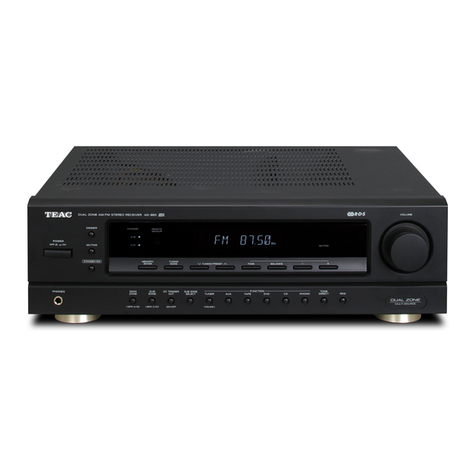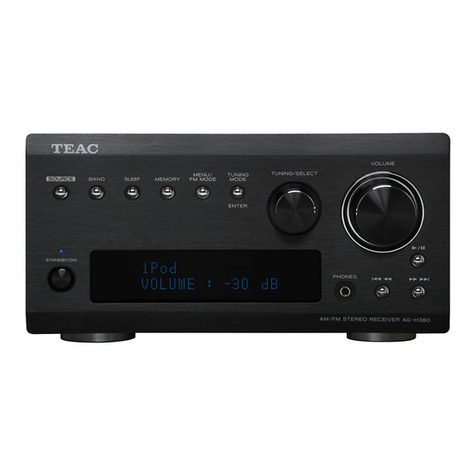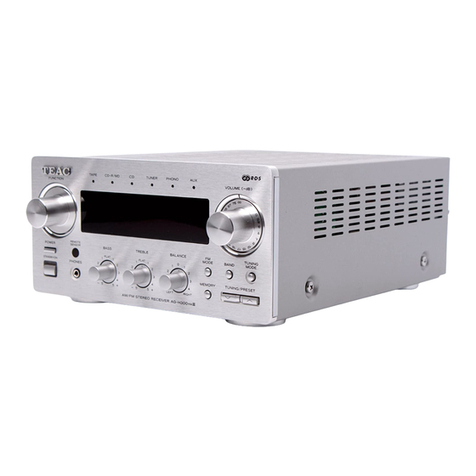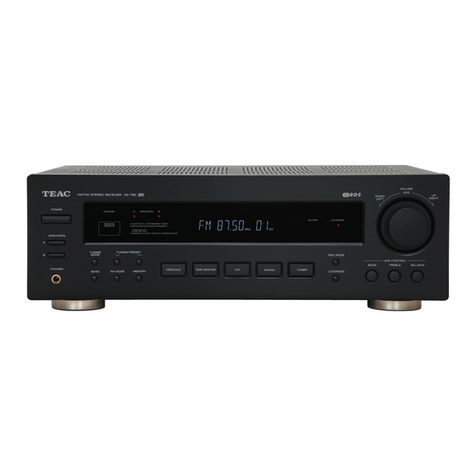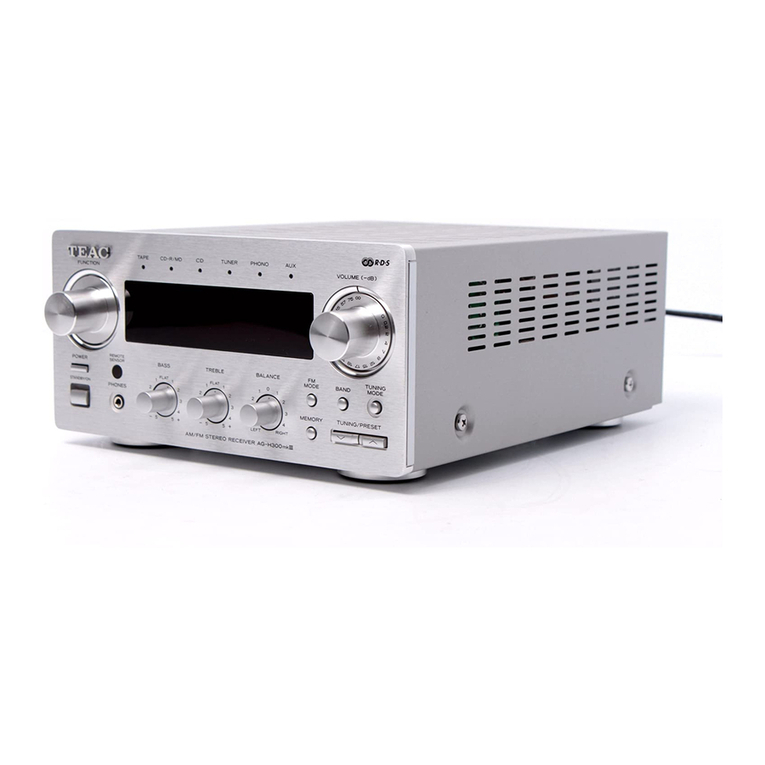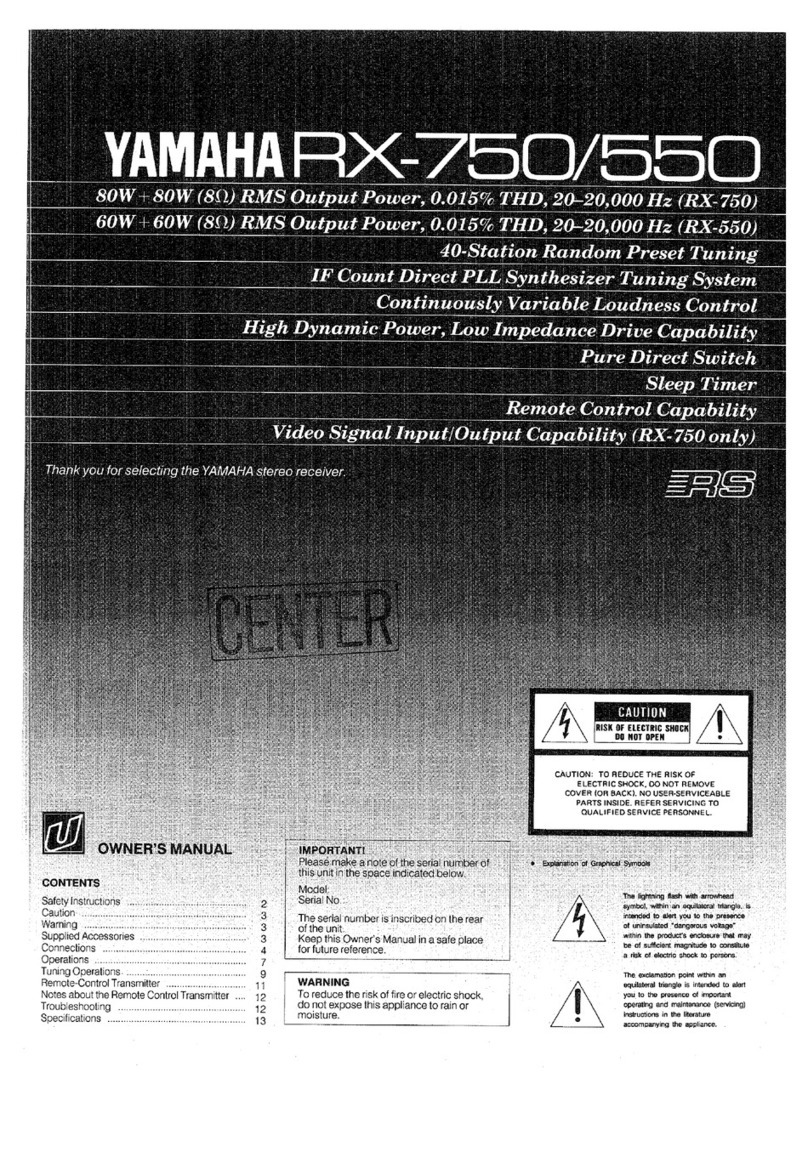Before Use
…Place the receiver on a hard, flat
surface.
…The ventilation holes should not be
covered. Make sure there is at least 50
cm (20 inches) of space above and at
least 10 cm (4 inches) of space beside
the receiver. Do not place a CD player or
other equipment on top of the receiver.
…Avoid placing it in direct sunlight or
close to a source of heat. Also avoid
locations subject to vibrations and
excessive dust, heat, cold or moisture.
…Do not open the cabinet, as this might
result in circuitry damage or electrical
shock.
…Do not attempt to clean the unit with
chemical solvents as this might damage
the finish. Use a clean, dry cloth.
∑How to connect
(1) Twist the wires tightly together so that
they are not straggly.
(2) Turn the terminal cap counterclockwise
to loosen it.
The speaker terminal caps cannot be
fully removed from the base.
(3) Insert the wire into the terminal fully and
turn the terminal cap clockwise to
securely connect it.
(4) Make sure it is fastened firm by pulling
the cord lightly.
Read This Before Operating
Notes on power sources
Caution:
To avoid damaging the speakers by inputing
a sudden high-level signal, be sure to
switch the power off before connecting the
speakers.
∑Before connecting
…Check the impedance of your speakers.
Connect speaker with an impedance of 8
to 16 ohms.
The receiver's red speaker terminals are
the ≠(positive) terminals and the black
terminals are the –(negative) terminals.
…The ≠side of the speaker cable is
marked to make it distinguishable from
the –side of the cable. Connect this
marked side to the red ≠terminal and
the unmarked side to the black terminal.
…Prepare the speaker cords for
connection by stripping off
approximately 10 mm or less (no more as
this could cause a short-circuit) of the
outer insulation.
Speaker Connections
–3 –
ENGLISH
IMPORTANT (for U.K. Customers)
DO NOT cut off the mains plug from this
equipment. If the plug fitted is not
suitable for the power points in your
home or the cable is too short to reach
a power point, then obtain an
appropriate safety approved extension
lead or consult your dealer.
If nonetheless the mains plug is cut off,
remove the fuse and dispose of the plug
immediately, to avoid a possible shock
hazard by inadvertent connection to the
mains supply.
If this product is not provided with a
mains plug, or one has to be fitted, then
follow the instructions given below:
IMPORTANT. DO NOT make any
connection to the larger terminal which
is marked with the letter E or by the
safety earth symbol ç or coloured
GREEN or GREEN-and-YELLOW.
The wires in the mains lead on this
product are coloured in accordance
with the following code:
BLUE: NEUTRAL
BROWN: LIVE
As these colours may not correspond
with the coloured markings identifying
the terminals in your plug proceed as
follows:
The wire which is coloured BLUE must
be connected to the terminal which is
marked with the letter N or coloured
BLACK.
The wire which is coloured BROWN
must be connected to the terminal
which is marked with the letter L or
coloured RED.
When replacing the fuse only a
correctly rated approved type should
be used and be sure to re-fit the fuse
cover.
IF IN DOUBT —CONSULT A
COMPETENT ELECTRICIAN.
Before operating the unit, check that the
operating voltage of the unit is identical to
your local power supply. The operating
voltage is indicated on the nameplate on
the rear panel of the unit.
…Turn off power for all equipment before
making connections.
ªPower cord
…Be sure to connect the power cord to an
AC outlet which supplies the correct
voltage.
…Hold the power plug when plugging or
unplugging the power cord.
ªMain power switch
…The system cannot be turned on when
the main power switch on the side panel
is OFF.
Leave the main power switch ON at all
times.
Table of Contents
Before Use...................................................... 3
Rear Panel Overview .................................... 4
Connections.................................................... 5
Remote Control Operation............................ 7
Front Panel Controls and
Their Functions......................................... 8
Operating the Amplifier ................................ 9
Operating the Tuner..................................... 10
Specifications............................................... 14
Troubleshooting............................................ 15


